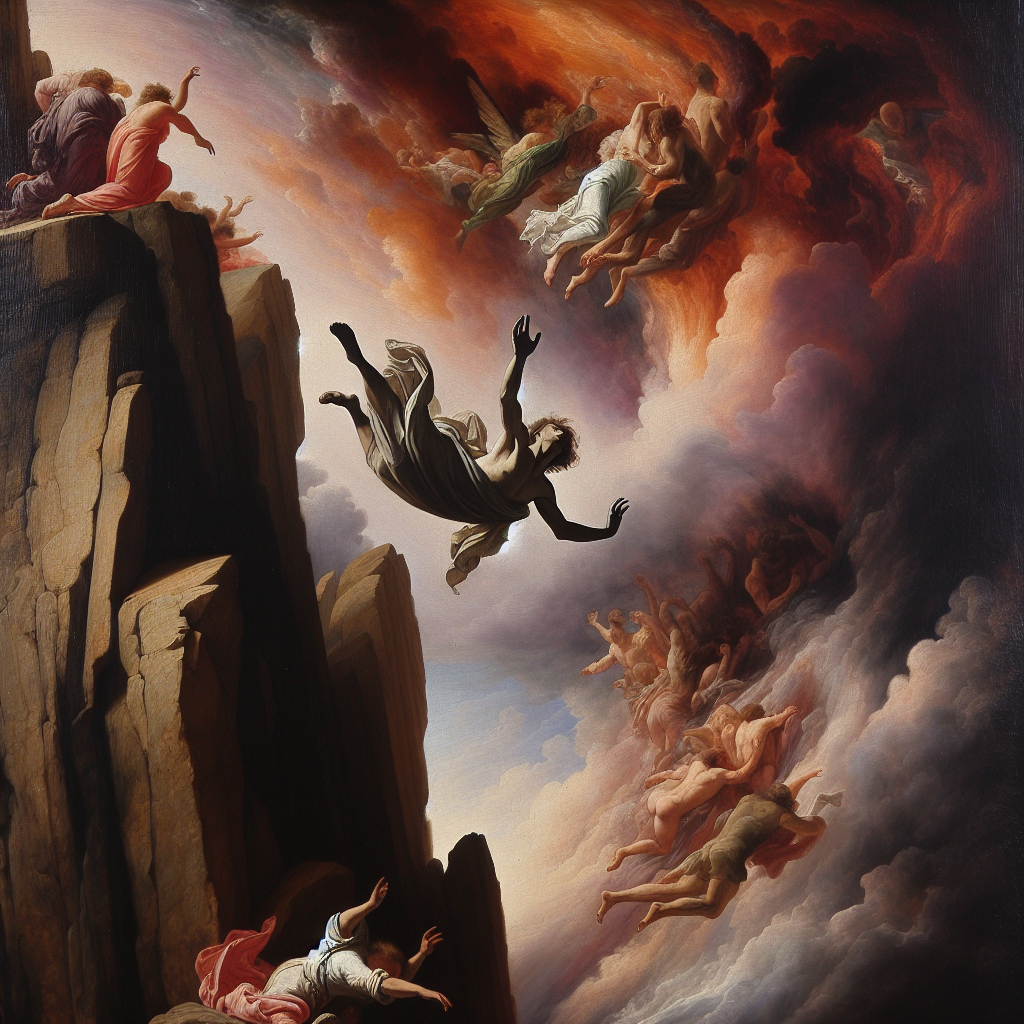The Art That Conveys a Fascinating Narrative
Imagine stepping back in history, where art is more than just aesthetic pleasure. It’s 17th-century Venice, in the heart of the Greek community, where an artist named Theodore Poulakis mesmerized viewers with his profound painting, ‘The Fall of Man.’ A remarkable piece shining from the Ionian Islands, this artwork illustrates the biblical tale of Adam and Eve's downfall. But why would Poulakis, a fervent devotee to the iconography style, choose to depict such a narrative, and what does it mean for humanity?
Theodore Poulakis: A Paragon of Cretan Art
Before sprinting into the depths of the painting, let’s hover around the artist himself. Theodore Poulakis, a Greek painter, was highly regarded as a champion of the Heptanese School, the Ionian islands' cultural wave that emerged around the Renaissance period. His artwork wedded Byzantine traditions with Venetian influences, creating a rich mosaic of styles that captured the cultural symphony of this time.
Born in 1622 on the island of Crete and later settling in Venice, Poulakis was renowned for his ability to meld religious narratives with contemporary style. ‘The Fall of Man’, painted in 1688, serves as a testament not only to his artistic prowess but also to the theological and philosophical currents coursing through his veins. Embracing both Greek Orthodox and Western influences, Poulakis wasn’t merely painting images, he was narrating stories — tales of human nature, divine grace, and moral introspection.
Symbology in ‘The Fall of Man’
To understand Poulakis’s masterpiece, we must decode the symbology. ‘The Fall of Man’ portrays perhaps the most infamous human mishap — the first sin. At its core, the painting shows Adam and Eve amid the paradisiacal Garden of Eden, entwined in a forbidden tale’s nuances. But this isn’t a simple retelling; it’s a profound portrayal filled with symbols that require your eyes’ keen observation.
The serpent, as it often does in biblical art, curls around the tree of knowledge. It’s a tapestry of temptation, a reminder of beauty that conceals deceit. Eve, with a hesitant hand outstretched toward the fruit, symbolizes curiosity and the quintessential human yearning for knowledge. Adam stands nearby, embodying shared complicity and the universal struggle between desire and obedience.
The Garden as a Mirror to Society
What really marks Poulakis’s painting as extraordinary is not just his rendering of biblical figures but the inclusion of fauna and flora entwined throughout. Detailed, vibrant, and abundant — the Garden of Eden serves as a backdrop but also as a character within the scene. Each creature and tree could symbolize various traits of the moral world Poulakis inhabited.
Interestingly, the lush garden, filled with an almost chaotic variety of plant life, reflects the 17th-century’s burgeoning curiosity about natural sciences and the divine order. Through his art, Poulakis exhibited his fascination with the natural world while questioning humanity’s place within it, a brilliant move that merges scientific inquiry with theological tradition.
A Dialogue through Time
While talking about historical art, one might wonder — why is it still relevant, and why should we care? Poulakis tackles the universal themes of human nature, temptations we face, and the balance between knowledge and innocence. These are not mere relics of the past; they resonate today just as they did over three centuries ago.
The dialogue between the figures — Adam reaching towards Eve, Eve eyeing the serpent, the serpent offering the fruit — is a narrative as old as time and as fresh as now. It illustrates an ongoing reflection on choice and consequence, ultimately posing questions about accountability and moral restraint that remain pertinent today.
Science and Art: A Harmonious Interplay
For those passionate about learning and humanity, Poulakis’s ‘The Fall of Man’ is a perfect case study of art meeting science and theology meeting psychology. This union of disciplines was not only prevalent in Poulakis’s time but continues to underscore how diverse knowledge intertwined helps us unravel the fabric of our human experience.
His painting remains an archaeological trove where artistry sparks introspection. The meticulous details, combined with theological depth, offer a tableau that transcends time. It’s a notion that showcases how art isn’t just about observing; it’s about engaging and questioning the human condition — hints left meticulously by a master painter.
The Enduring Legacy of Poulakis
In championing both religious functions and emerging Venetian artistic styles, Theodore Poulakis left a legacy that’s a beacon for art enthusiasts and scholars alike. ‘The Fall of Man’ endures not merely as a visual treat but as a philosophical discourse booster.
So, as you reflect upon Poulakis’s narrative masterpiece, I invite you to consider the richness of art and its ability to transgress the walls of time and space. By examining this specific painting, we unlock a broader realization. Art is not just a window to history but a mirror to our souls, showing us that while much may change, the corpus of human understanding forever grapples with similar desires and inquiries.
In sum, Theodore Poulakis has given us more than an image. He’s left us with an intellectual compass, an artistic lens to understand not just a biblical tale but the beauty and complexity of the human journey.

